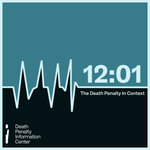Racial Justice Reports
DPI's reports on the racial history of the death penalty in individual states
Overview
The death penalty has long come under scrutiny for being racially biased. Earlier in the twentieth century when it was applied for the crime of rape, 89 percent of the executions involved black defendants, most for the rape of a white woman. In the modern era, when executions have been carried out exclusively for murder, 75 percent of the cases involve the murder of white victims, even though about half of all homicide victims in America are black.
A bias towards white-victim cases has been found in almost all of the sophisticated studies exploring this area over many years. These studies typically control for other variables in the cases studied, such as the number of victims or the brutality of the crime, and still found that defendants were more likely to be sentenced to death if they killed a white person.
The issue of racial disparities in the use of the death penalty was considered by the Supreme Court in 1987. In a close vote, the Court held that studies alone could not provide the required proof of racial discrimination in a particular defendant’s case. This decision appeared to close the door to broad challenges to the death penalty. However, the Court has found racial discrimination in the selection of the jury in individual capital cases.
At Issue
Today there is growing evidence that racial bias continues in society, particularly within the criminal justice system. The existence of implicit racial bias among some law enforcement officers, witnesses, jurors, and others allows harsher punishment of minorities, even without legal sanction or intention. Although these prejudices are hard to uproot, the unfair application of the death penalty could be halted by eliminating that sentencing option altogether.
What DPIC Offers
DPIC tracks the race of those on death row, those who have been executed, the victims in the underlying crime, and many related statistics. It collects the sophisticated studies on racial bias that have been published over many years. Many of DPIC’s reports focus on aspects of this question and some are devoted entirely to the issue of race.
News & Developments
News
May 08, 2025
New Analysis: Capital Cases Overturned At Least Four Times Illustrate How Pervasive Prosecutorial Misconduct Contributes to High Cost of Death Penalty
The single most common outcome for a death sentence in the modern era is for it to be reversed on appeal due to a constitutional violation. Most people whose sentences are reversed get resentenced to life in prison or less, but some prosecutors persist in seeking new death sentences even after multiple reversals. A Death Penalty Information Center analysis of the 14 people sentenced to death four or more times for the same crime finds that prosecutorial…
Read MoreNews
May 06, 2025
New DPI Data Analysis: How Race Affects Capital Charging and Sentencing of 18 to 20-Year-Olds
In commemoration of the 20th anniversary of the U.S. Supreme Court’s landmark decision ending the juvenile death penalty, the Death Penalty Information Center (DPI) has released a new report: Immature Minds in a“Maturing Society”: Roper v. Simmons at 20, detailing the growing support for the idea that individuals ages 18, 19, and 20 should receive the same age-appropriate considerations that juveniles now receive in death penalty cases. The report also reveals…
Read MoreNews
Apr 30, 2025
New DPI Report Examines the Legacy of Roper v. Simmons and Its Implications for 18- to 20-Year-Olds in Death Penalty Cases
In commemoration of the 20th anniversary of the U.S. Supreme Court’s landmark decision ending the juvenile death penalty, the Death Penalty Information Center (DPI) today released a new report: Immature Minds in a“Maturing Society”: Roper v. Simmons at 20, detailing growing support that individuals ages 18, 19, and 20 should receive the same age-appropriate considerations that juveniles now receive in death penalty cases. > [T]here is no bright line regarding…
Read MoreNews
Mar 28, 2025
“He Looks a Little Like the Defendant”: A Closer Look at the History of Racial Bias in Jury Selection
As closing arguments of his trial began in Johnston County, North Carolina, Hasson Bacote watched as Assistant District Attorney Gregory Butler urged the jury to sentence him to death. Mr. Bacote, a Black man, had been convicted of fatally shooting 18-year-old Anthony Surles during a robbery when Mr. Bacote was just 21 years old. Mr. Bacote admitted he had fired a single shot out of a trailer, but said he did not know that he hit anyone.“Hasson Bacote is a thug: cold-blooded…
Read MoreNews
Feb 27, 2025
New Podcast: The Past, Present, and Future of the California Racial Justice Act
In the February 2025 episode of 12:01: The Death Penalty in Context, DPI Managing Director Anne Holsinger speaks with three experts on California’s Racial Justice Act (RJA). Natasha Minsker, an attorney and consultant, formerly of the ACLU, speaks on the history of the RJA and the impetus for its passage. Genevie Gold, research and writing fellow at the Office of the State Public Defender (OSPD), describes the process that an RJA claim follows through the legal system, and…
Read More



